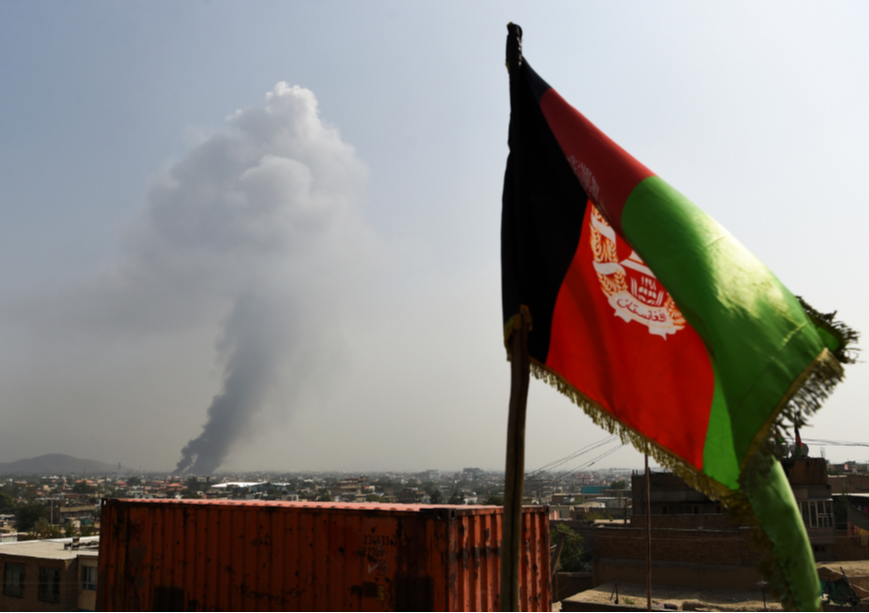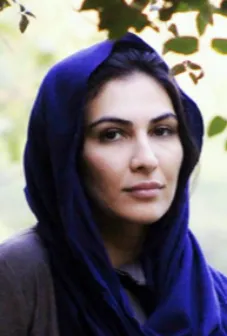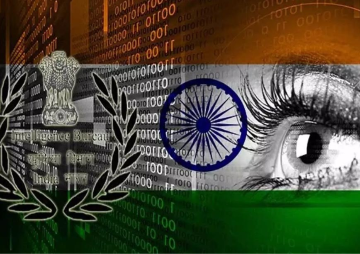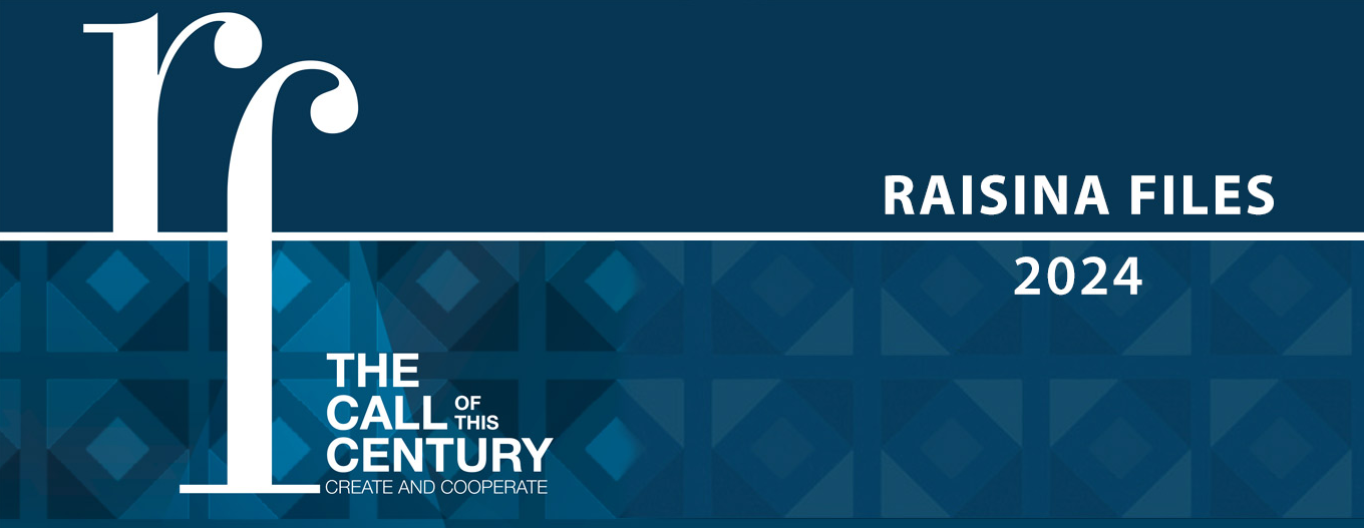
This article is a part of the series - Raisina Files 2024
Since returning to power in August 2021, the Taliban’s Islamic Emirate has reinstated many restrictions that have an uncomfortable resemblance to the policies they implemented during their earlier rule in the mid-1990s. Back then, they claimed that their restrictions on women working outside the homea and women going to school would be temporary. The Taliban cited residual fears from the brutality of the civil war that preceded their rise to power as the reason for the restrictions that were being imposed specifically on women.
The resurgence of the Taliban has bred difficulties for women and girls in Afghanistan, threatening their gains in education and economic participation, and many societal domains. With the Taliban back in power, their imposition of regressive gender norms has created barriers for Afghan women and girls where they have made progress over the last 20 years.
In the 1990s, many women saw little choice but to conform to the Taliban’s rule, seeking protection amid the prolonged war. Their fears stemmed from the alleged sexual violence and other abuses being perpetrated by the various armed groups, as reported by human rights organisations keeping a watch on the country. When the then Taliban government ordered all women to wear the chadari (the full-body veil, or burqa as it is called by Western media), they used the reports of intimidation, abuse and violence to justify that requirement. Those restrictions were kept in place throughout the Taliban rule from 1996 to 2001.
Some years after their ouster in 2001, a 2009 survey by the Asia Foundation[1] found that approximately half of Afghans, particularly Pashtuns and rural residents, sympathised with armed opposition groups, predominantly the Taliban. The support was fueled partly by grievances against public institutions. Ten years later, another survey showed a far lower 13.4 percent of Afghans expressing sympathy for the Taliban. Amid stalled intra-Afghan peace talks in early 2021, the majority of respondents emphasised the importance of protecting women’s rights and freedom of speech, and the safeguarding of the Constitution.
The current trajectory of Afghanistan hinges largely on whether the Taliban’s supreme leader, Haibatullah Akhundzada, maintains control over the group’s decision-making and if they can rise above internal divisions. The “liberal” faction, notably associated with the Doha office, advocates for advancements in Afghan women’s rights. The Haqqani faction,[2] which advises the Emir, leans towards stricter regulations.
Mid-level Taliban members in the Doha camp have expressed a desire for female family members to receive education and participate in the workforce. However, a decree from the leader prohibits women above the sixth grade from working and constrains their participation in various fields. Despite the moderate inclinations of some mid-level members, they are bound by the directives of the Emir. The potential for progressive strides in the realm of Afghan women’s rights will become more plausible if a scenario unfolds wherein the Emir is removed, paving the way for a candidate from the liberal camp. In such circumstances, a prospect could emerge for the Taliban to undertake measures conducive to the advancement of Afghan women.
Enduring Restrictions on Women and Girls
When the Taliban returned to power in the summer of 2021, with the approval of the international community, mainly guided by the United States, the new Islamic Emirate said they would allow Afghan women to retain every right that is due them under Shari’a and the Islamic faith. This led some analysts to suggest that the Taliban’s ideology had mellowed, or that their exposure to the international community had perhaps led to some “sophistication”, possibly resulting in the formation of an “inclusive Islamic government”.[3] Other observers argued that providing the Taliban with material assistance and officially recognising their legitimacy could encourage them to remain “relatively restrained”[4] and, over time, prompt improvements in conditions for women and girls, and the ethnic and religious minorities.
This, however, has not happened. The Taliban have imposed stringent restrictions on women and girls. This time, they have invoked fears of upsetting Afghan cultural standards and the lack of preparedness by their own forces to interact with women as the reasons for extracting compliance with these norms and rules.
When the Taliban told women working for the government—a significant portion of the workforce—to stay at home and not report to their offices, the Taliban reasoned that they could not ensure that men among their ranks would be able to conduct themselves properly around women in professional environments. Likewise, when they closed the doors of schools, first to girls above the sixth grade and later to women in government universities, they were adamant that the restrictions were not due to any Islamic teachings but fears around Afghan culture and proper dress standards. In subsequent months, they would also cite curriculum changes and transportation issues as other sources of difficulty in reopening secondary schools and universities to girls and women.[5]
These announcements were met with criticism from other Muslim-majority countries, including Qatar, Pakistan, and the United Arab Emirates, all of whom said that women can study and work in their countries, even as Islam remains fundamental to their societies. In March 2002, Lana Nusseibeh, the UAE’s ambassador to the United Nations, called on the Taliban in Afghanistan to allow girls into classrooms, emphasising that educating women is “fully compatible” with Islam.[6] The Taliban then quickly returned to their earlier justification of dissonant cultural norms.
For the Taliban, anchoring the restrictions on supposed cultural norms provided them cover for criticisms that would come both from the West and from other Muslimmajority nations. For Afghanistan’s women and girls, such statements about “Afghan culture” are nothing new; they have had to deal with these claims about the place of women in society for decades, including during the rule of the Western-backed Islamic Republic.
Yet, apart from the regressive policies of the Taliban, Afghan women are confronted with persistent sociocultural factors that limit their opportunities for education, employment, and essential services like healthcare and justice. According to the Mix Migration Report 2018, prior to the Taliban’s takeover, many women were leaving the country because they were suffering massive insecurity.[7] Other factors that contributed to women leaving included a lack of rights, personal and family considerations, economic motives, and a shortage of social services, including in situations where they needed refuge from a forced marriage or domestic violence.[8]
Likewise, though today all girls and women are locked out of formal education above the sixth grade, in the past more than two million girls were already kept out of school due to both, safety concerns during the war between the Western-backed government and the Taliban, as well as cultural constraints. In 2017, Human Rights Watch reported that since the US-led invasion in 2001, the proportion of girls attending school in Afghanistan has never risen higher than 50 percent.[9]
Persistent Activism
In the initial days of the Taliban’s return, women faced abuse and potential jail time for engaging in protest actions to demand their rights to work and education. Despite the risks,[10] they mobilised themselves in cities like Kabul, Herat, and Mazar-e Sharif. Over the last two years, those movements have spread to several other areas.
In September 2022, adolescent girls[11] took to the streets of Gardez, the capital of Paktia province, when the government once again closed their schools, which had managed to reopen for about a week. Likewise, in December of the same year, men and women demonstrated against the Taliban ruling that closed all universities to women across the country. The streets and universities of Jalalabad, Kabul, Kandahar, Khost, Herat, Mazar-e Sharif, and Bamiyan once again saw women, joined by men, speaking out in opposition to the decree. The demonstrations, as before, were met with intimidation and violence.
To be sure, in epochs past, Afghanistan’s women have engaged in culturally nuanced forms of advocacy, albeit always within the confines of familial approval. Their agency was subject to the permission granted by men. The advent of the civil war marked a dark chapter, witnessing the mistreatment of women and the commission of war crimes. Subsequently, the emergence of the Taliban perpetuated this plight.
Contemporary women, particularly those raised in urban areas, could perhaps be said to have been exposed to Western democratic values. Even in the provinces, there is a discernible shift, with women experiencing a comparatively more liberal upbringing than their forebears. This is evident in the increased visibility of schools, the presence of women on media platforms like the radio, and their emergence in political roles. Consequently, these women have come to possess more autonomy, visibility, and arguably, independence. In the contemporary context, therefore, a specific class of women and girls are experiencing relatively more freedoms compared to their compatriots during the tumultuous period of the civil war and the initial Taliban rule. Urbanisation has played a role as more individuals moved to cities, encountering more diverse experiences. Simultaneously, global changes, including advancements in media and the growth of social media, along with increased mobility, exposed them to different cultures and perspectives.
Despite initial fears when Kabul fell, women who could not leave the country eventually found means to resist. This resistance has been unfolding since the latter part of 2021, marked by subtle, individual actions contributing to a collective effort. Unlike big marches seen in other contexts, these forms of protest focus on simpler, smaller-scale approaches to maintain what can be salvaged.
Following the NGO ban, for example, within a few weeks, they engaged with the Taliban across various provinces. Depending on the NGO they interacted with, they devised workarounds, ensuring that women were not laid off. Strategies included allowing women to work remotely, not requiring them to come to the office, or having a male family member accompany them during specific tasks like conducting surveys. Notably, these negotiations were led by the women themselves, illustrating their agency in navigating these challenges.
Women also persist in engaging in the media, doing interviews, and hosting debates on cultural, religious, and political issues, albeit while keeping their faces covered with a mask. They strategically navigate these opportunities to carve out their share of public spaces. While it may be challenging to showcase, women continue to be visible on the streets, interacting with one another. They are actively employed in various sectors, such as banks, airports, ministries, schools, private companies, and NGOs—a stark contrast to the limitations of the 1990s.
These activities may be receiving limited news coverage, but they underscore the resilience of Afghanistan’s women. The activism may even appear trivial to the casual observer: For instance, when beauty salons closed, women adapted by offering freelance services at either the wedding venue or the bride’s house. These seemingly small yet significant movements and activities mostly go unnoticed in the media, and therefore are not celebrated by outsiders.
Indeed, while there are positive developments, external expectations often seek dramatic shifts from women and the Taliban. Many noteworthy aspects, however, may not reach the media due to concerns about potential repercussions, particularly in jeopardising exemptions granted by Taliban officials.
For instance, well-known NGOs, despite securing exemptions across significant portions of the country, refrain from public announcements to avoid risking these privileges. Similarly, the existence of homeschools and unofficial schools serves as a subtle yet impactful means of carving out spaces for women and girls.
The Radical in Everyday Life
The women of Afghanistan are striving to focus on practical, everyday actions to enhance livability. Rather than seeking dramatic scenes, they engage in simple, strategic approaches to create small spaces of freedom. This involves dialogue with receptive Taliban members, as well as the courageous act of attempting to live their lives without drawing undue attention to themselves. Each action is a test, a chance to push boundaries, recognising the risks involved but choosing this path due to the dire alternative. Those who cannot step outside to raise their voices—especially as the Taliban continue to jail activists—have had to find other ways to make their presence known and improve their well-being.
Part of these efforts is the work of organisations like Her Afghanistan,b which emerge as channels of resistance by employing innovative strategies to empower women and girls across the country. Women from this organisation have established sewing shops, young women have taken on writing projects, college graduates are venturing into online journalism and engaging in online consulting for various organisations. Women join Her Afghanistan for various reasons—i.e., training opportunities, connections through mentorship programmes, or scholarships and job opportunities. It is not confined to a specific training scale; rather, it operates as an organisation that fosters networking and diverse opportunities.
Another example is the NGO, Afghan Institute of Learning (AIL), which continues its operations under the Taliban regime. AIL is dedicated to empowering Afghan women by broadening their educational and health horizons, cultivating self-reliance, and promoting active community participation. The organisation extends its educational services from preschool to post-secondary levels. Recognising that an educated and healthy woman can be equipped for personal success and become economically productive, AIL works to foster self-sustaining family units through education.
Given the extent of the need, however, there are far too few Afghani-led organisations focused on women and girls’ empowerment. At the same time, Afghan women, individually, are unveiling the transformative power of everyday resistance at a time when every step outside becomes an act of subversion. Subtle acts of defiance, such as the bold choice of a vibrant attire, are a testament to their agency and an implicit challenge to oppressive norms. Innovation in resistance strategies has become a crucial aspect of Afghan women’s struggle, perhaps exemplifying a more sophisticated form of activism that transcends physical boundaries. Women are displaying agency and resilience in navigating the challenging terrain of resistance today.
The Role of Tech
A noteworthy evolution unfolds as contemporary women now exercise autonomous and willful participation in active resistance. The transformative difference lies in their self-driven endeavours, unhindered by the denial of external permission. Aiding their empowerment are digital tools, including the internet.
In the contemporary epoch, the internet has indeed emerged as a superpower that catalyses change. It serves as a potent instrument that enables women to amplify their voices, fostering a new dimension of agency and advocacy. More connected than ever, Afghan women leverage the internet for communication, education, activism, and employment. This interconnectedness enables the dissemination of innovative ideas, nurturing a global network of solidarity. The internet becomes a force multiplier, enabling women to overcome physical constraints and fostering a digital realm of empowerment.[12]
Online activism[13] has allowed Afghan women to defy restrictions and make their voices heard. The dissemination of protest videos, meaningful hand signs, and powerful messages have all been made possible by the use of the internet.
Conclusion
Initiating discussions on advancing women’s rights demands a multifaceted approach. It requires a nuanced understanding of cultural sensitivity frameworks deeply embedded in societal progress. Stakeholders can contribute significantly by garnering international support, emphasising educational initiatives, fostering inclusive governance structures, engaging religious leaders in constructive dialogues, and supporting grassroots initiatives that empower women.
Within this context, it becomes crucial to pay attention to seemingly minor details that can pave the way for substantial changes over time. For instance, the presence of moderate Taliban factions, allowing women to work in NGOs or supporting homeschooling, can contribute to the gradual expansion of women’s rights.
Moreover, it is vital to recognise the evolution of Afghan women from the ‘90s to the present. Today’s women are not confined to the limitations imposed in the past; they continue to find and create even the smallest spaces that could lead to advances in various spheres of life.
An imperative is to convene Islamic scholars and seek their endorsement for women’s education and their integral role in society. Islamic scholars play a pivotal role in advancing women’s rights by engaging in the interpretation of Islamic texts in a manner that supports gender equality. Through education and advocacy, they work to dispel misconceptions and promote a more inclusive understanding of Islam’s stance on women’s rights. Scholars actively challenge misinterpretations that perpetuate discrimination, emphasising the inherent dignity and rights of women within the Islamic framework. They collaborate with policymakers to support legal reforms aligned with Islamic principles, addressing issues like family law and domestic violence.
Engaging with communities, scholars promote positive changes in cultural practices that may adversely affect women. They encourage education for women and girls, underscoring the historical significance of educated women in Islam. They also advocate for the empowerment of women in leadership roles within religious institutions and community affairs, fostering inclusivity and representation.
Collaborative efforts can serve as a powerful catalyst for positive change in the landscape of women’s rights in Afghanistan, aligning cultural and religious values with aspirations for progress and equality. While the challenges are stark, a steadfast commitment to meaningful engagement is crucial for constructing a more inclusive and equitable future for women in Afghanistan.
Endnotes
[1] Amnesty International, “Documenting the Degradation of Women’s and Girls’ Rights under the Taliban,” 2022.
[2] Vanda Felbab-Brown, “Afghanistan in 2023: Taliban Internal Power Struggles and Militancy,” Brookings, February 3, 2020
[3] Frud Behzan, “Taliban’s ‘Mullahcratic’ Government: Militants Fail to Form Inclusive Administration,” RFERL, September 8, 2021
[4] Marti Flacks and Lauren Burke, “New Century, Old Taliban,” CSIS, August 18, 2022
[5] John R. Allen and Vanda Felbab-Brown, “The Fate of Women’s Rights in Afghanistan,” Brookings, September 2020
[6] “Educating Women ‘Fully Compatible’ with Islam, UAE Envoy Tells Taliban,” The National News, March 2, 2022
[7] “Experiences of Female Refugees & Migrants in Origin, Transit, and Destination Countries: A Comparative Study of Women on the Move from Afghanistan, East and West Africa,” Mixed Migration Centre, September 2018
[8] Marie McAuliffe and Mohib Iqbal, “Struggling to Survive: Gender, Displacement, and Migration in Taliban-Controlled Afghanistan,” Center for Strategic and International Studies (CSIS), February 23, 2022
[9] Human Rights Watch, ““I Won’t Be a Doctor, and One Day You’ll Be Sick”: Girls’ Access to Education in Afghanistan,” October 17, 2017
[10] Wahida Amiri, “Women Protest and Power: Confronting the Taliban,” Amnesty International, March 7, 2023
[11] “Afghan Girls Protest Closure of Secondary Schools,” RFERL, September 10, 2022
[12] World Bank, “World Development Report 2016”
[13] Georgetown Institute for Women, Peace and Security, “The Global Women, Peace and Security Index"
The views expressed above belong to the author(s). ORF research and analyses now available on Telegram! Click here to access our curated content — blogs, longforms and interviews.




 PREV
PREV



